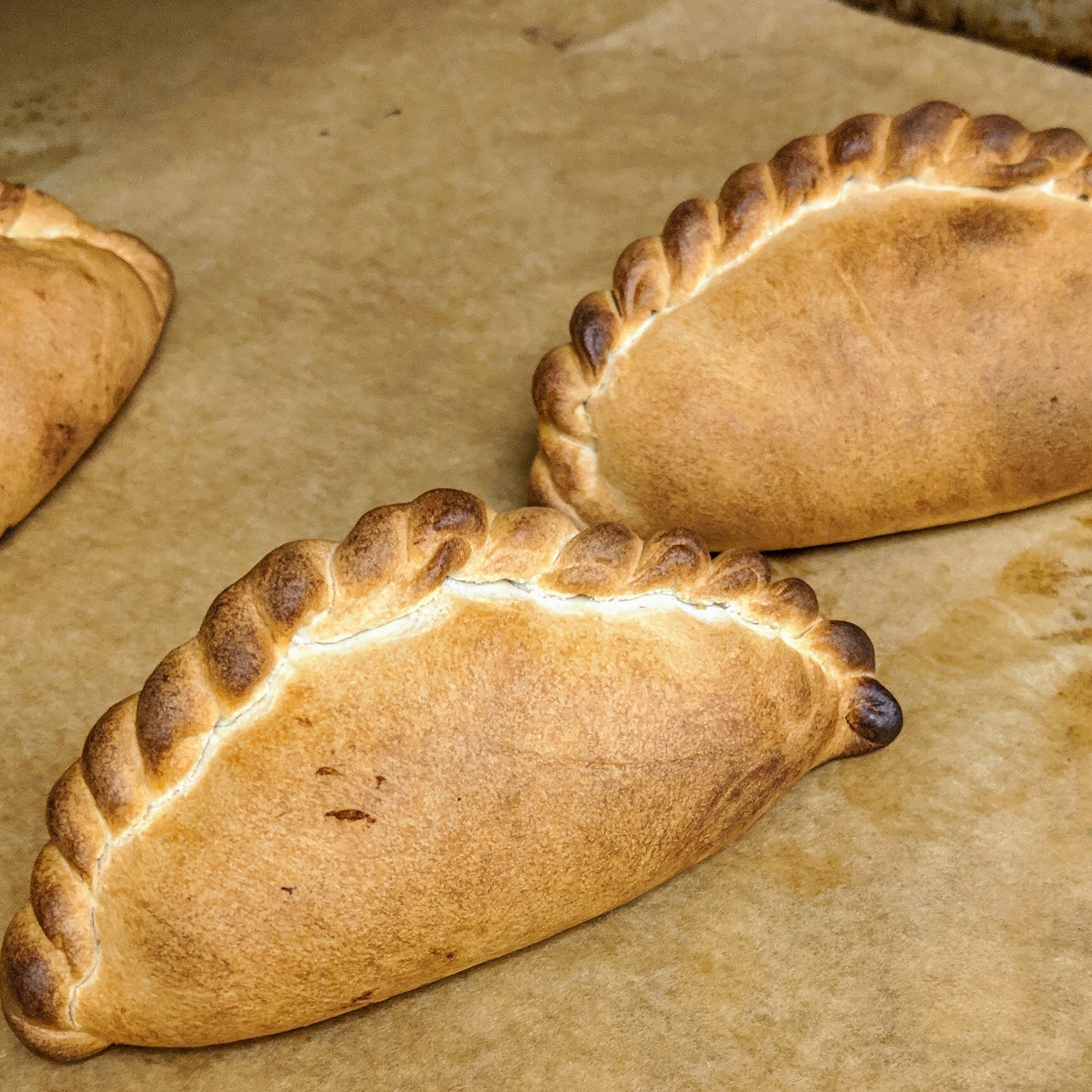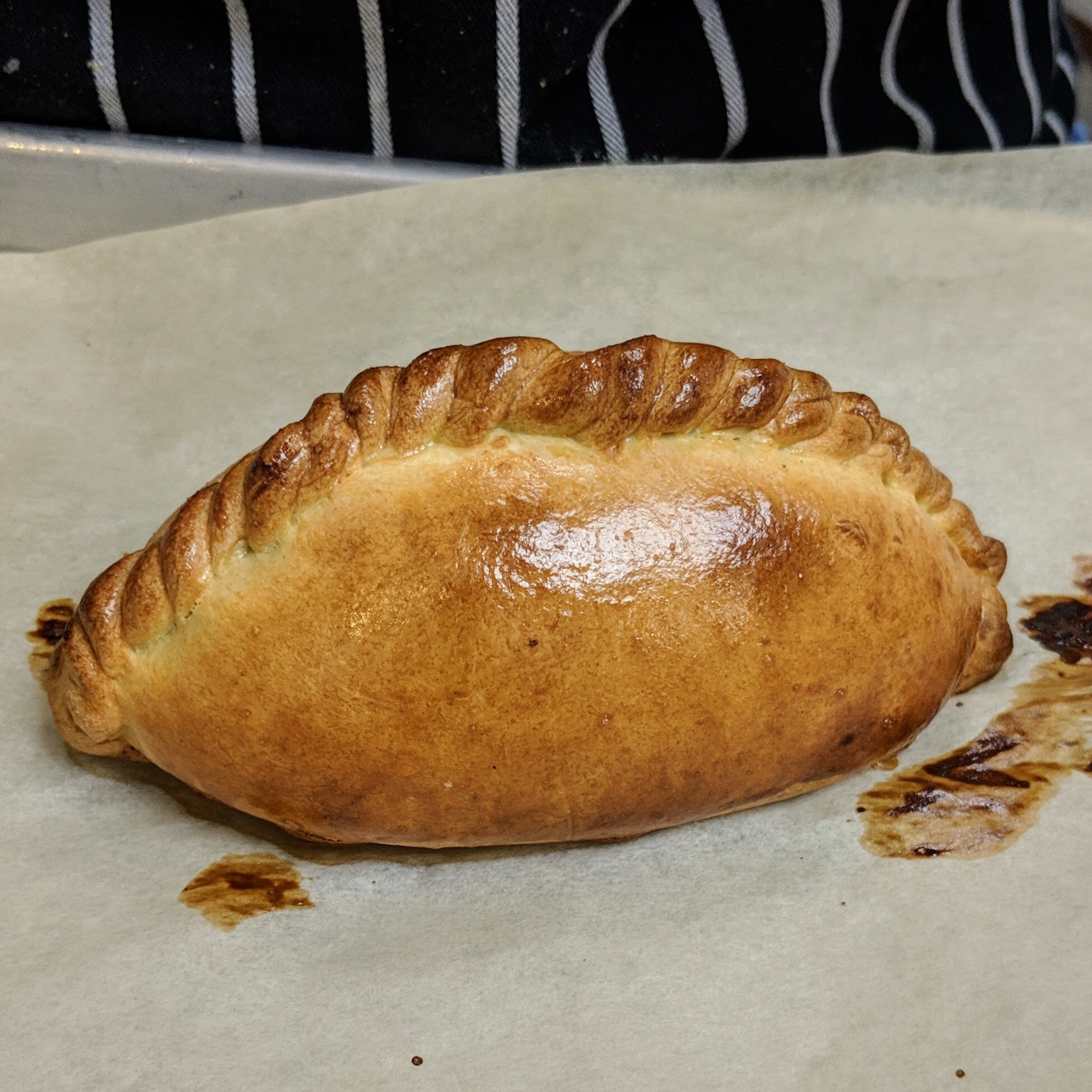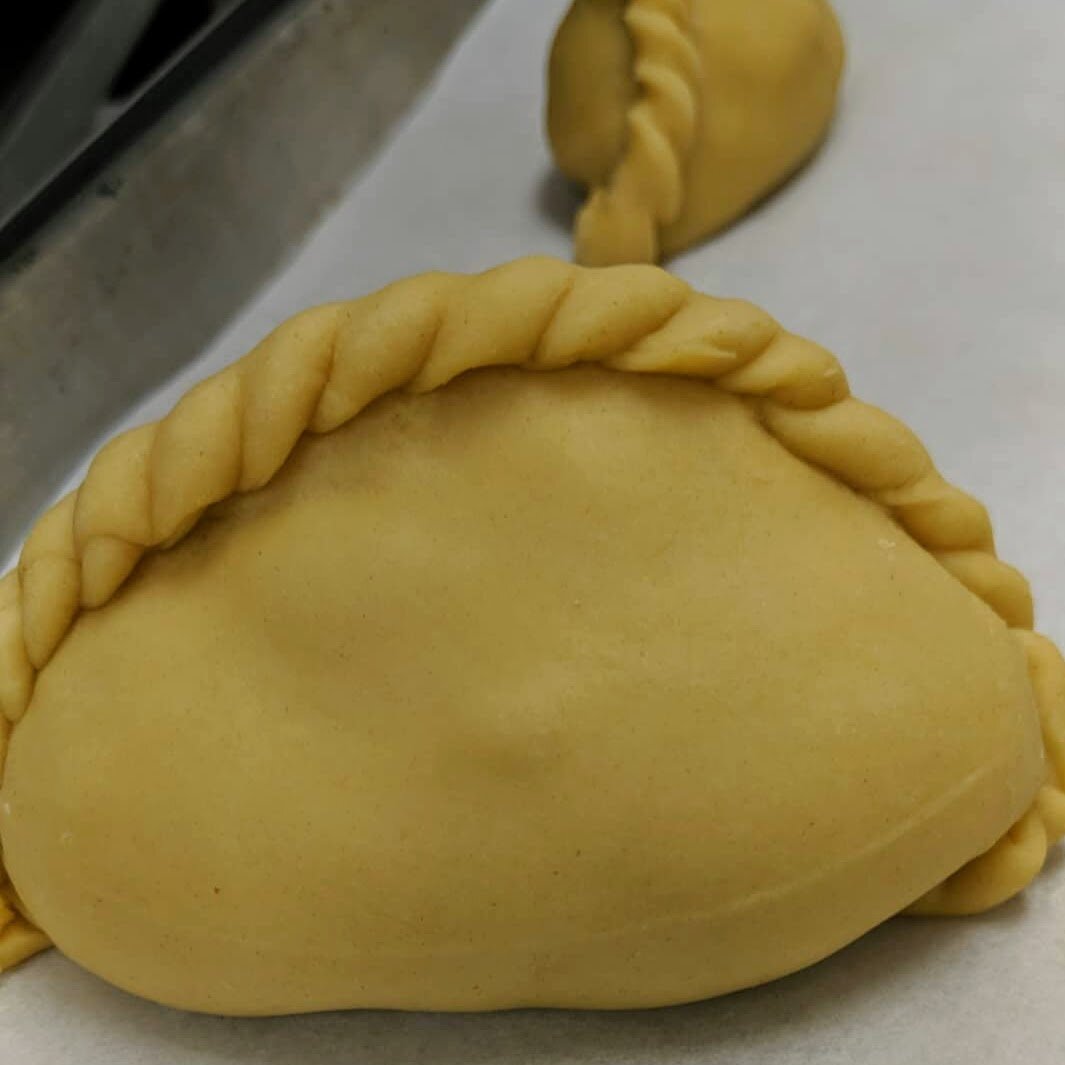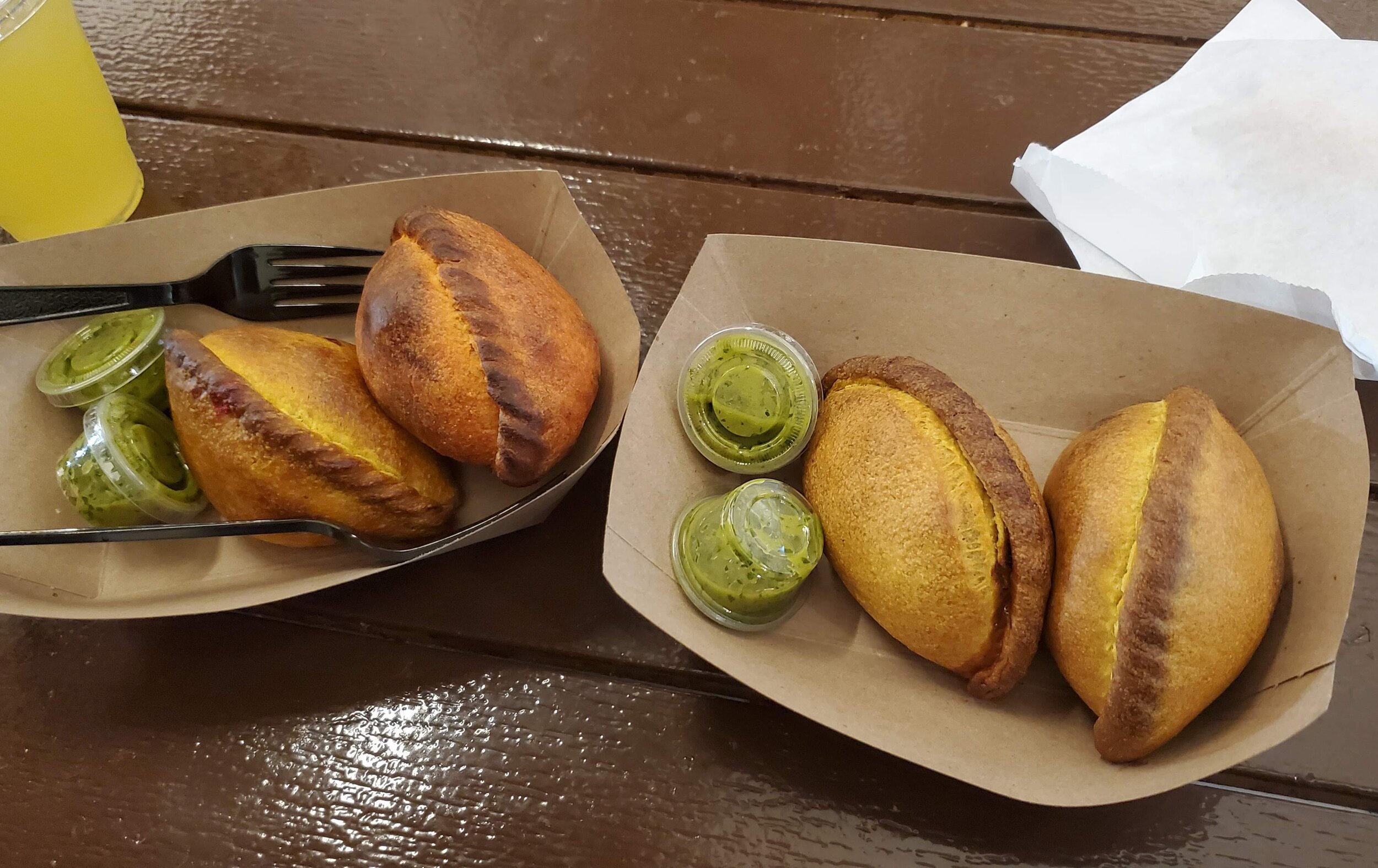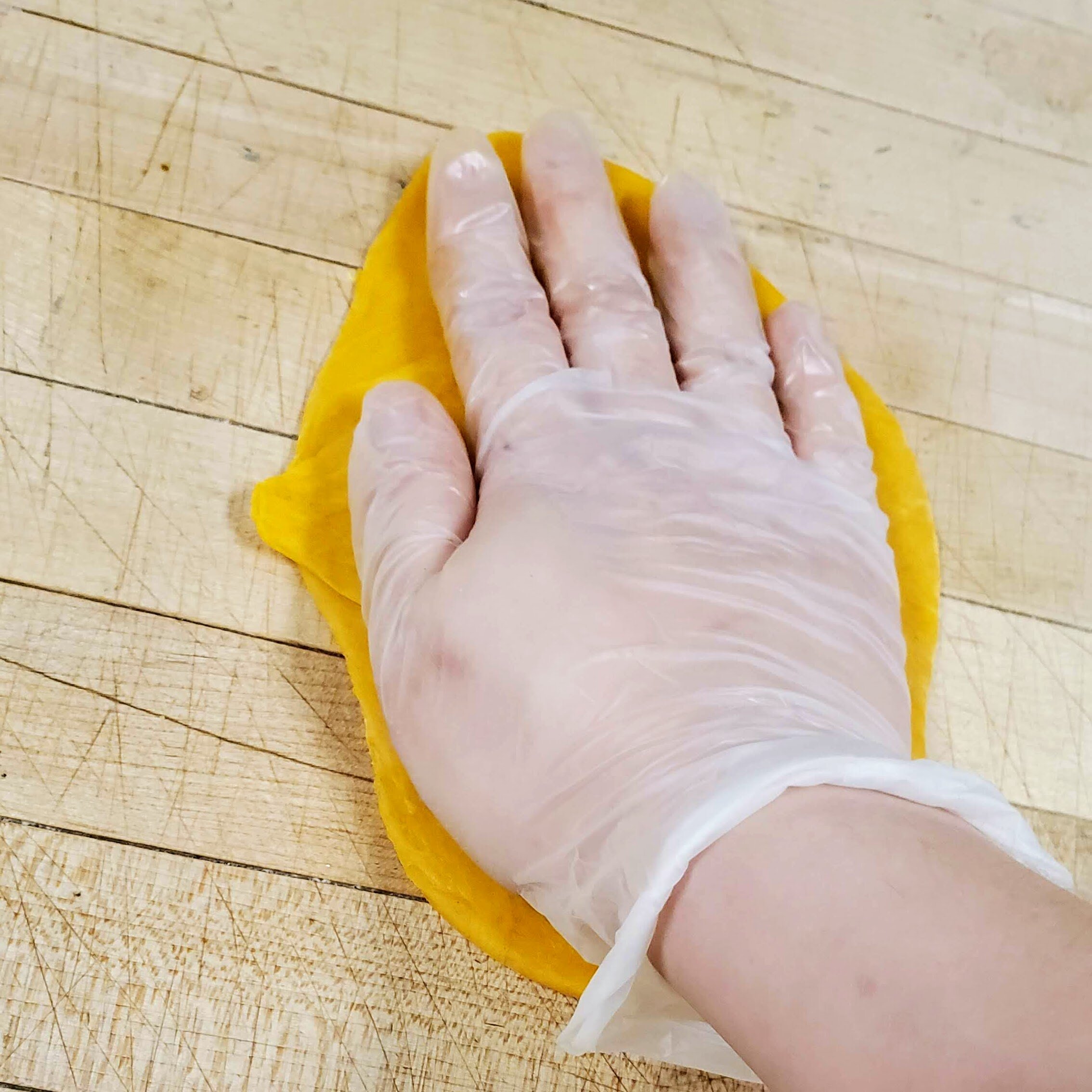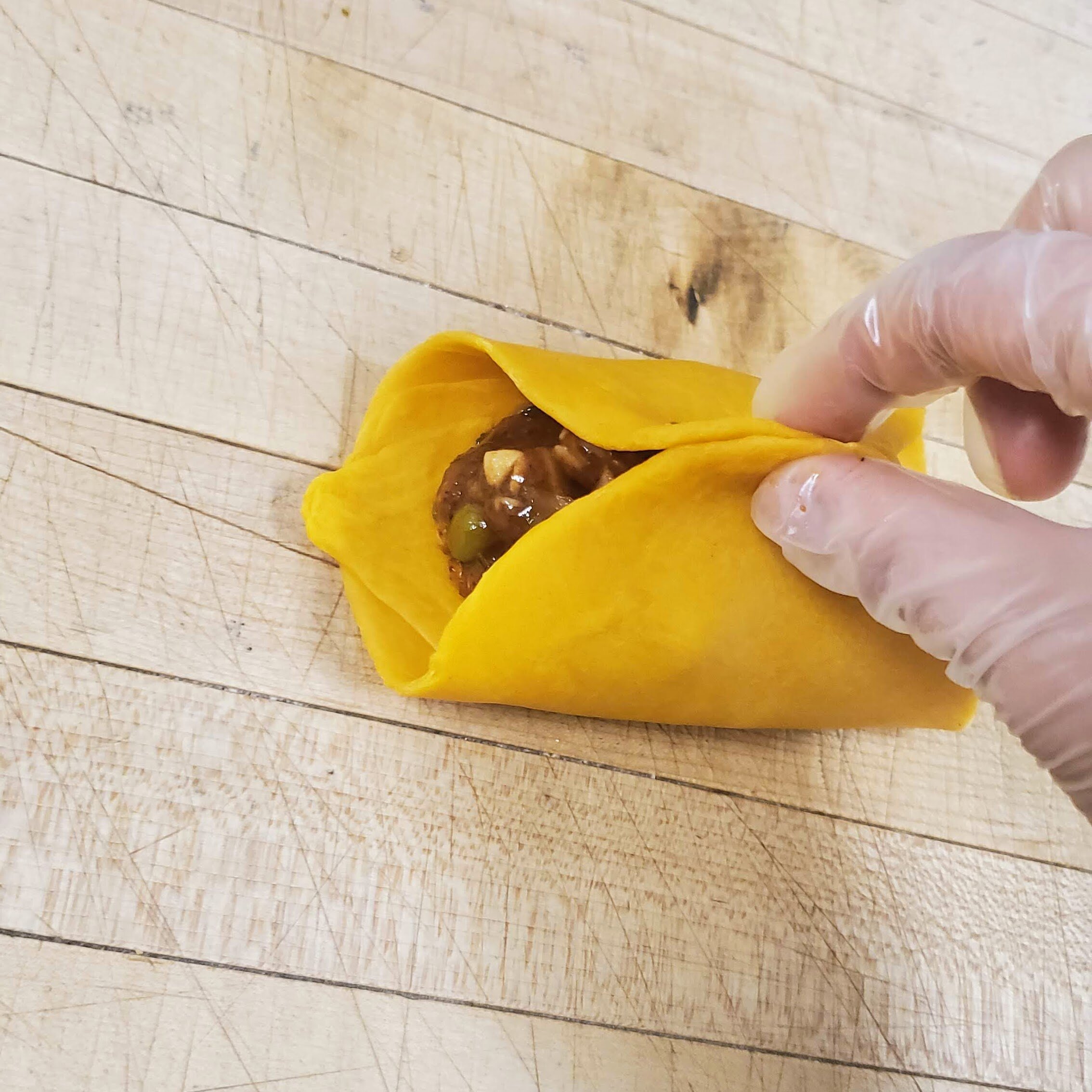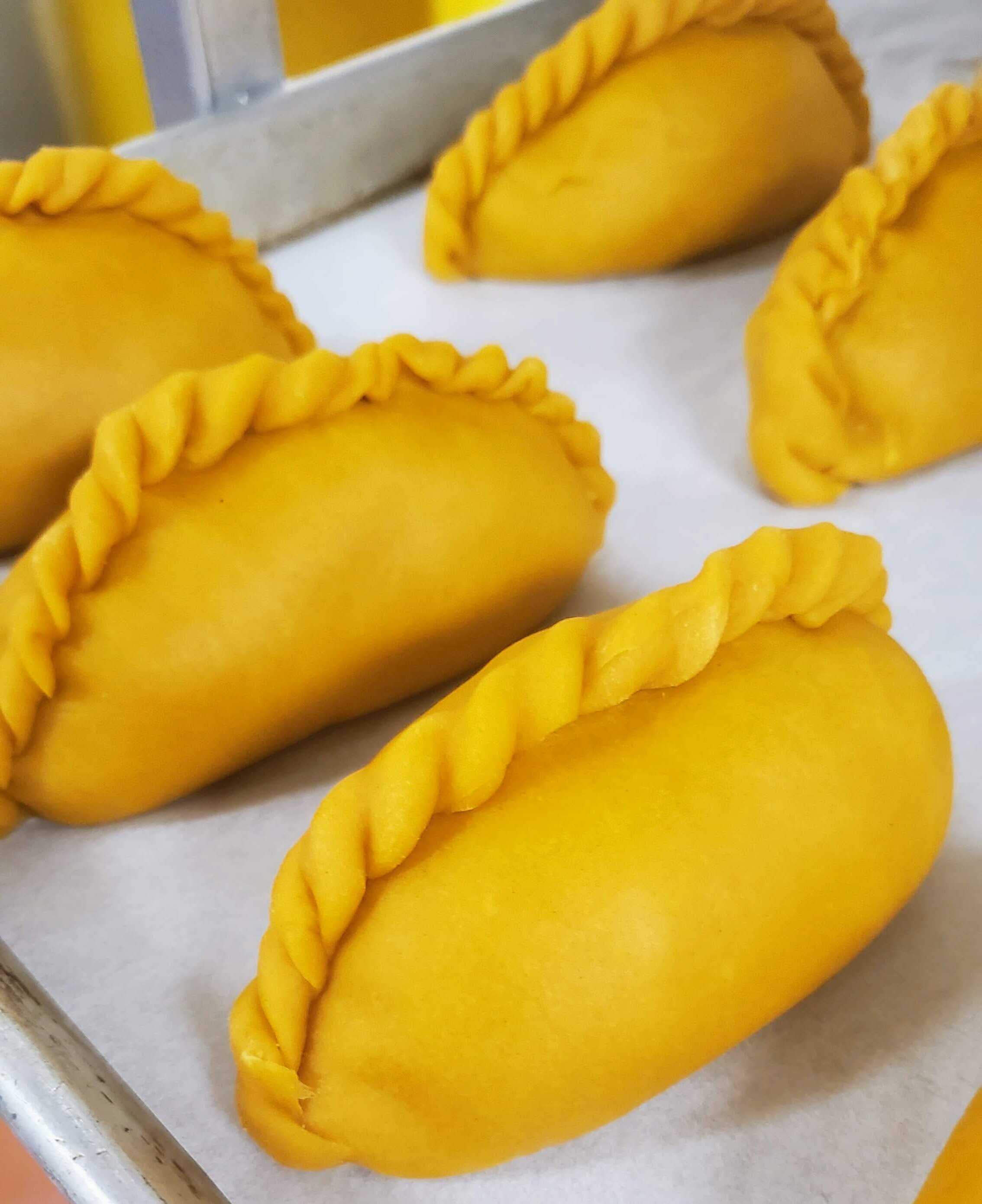Salteña, "a type of baked empanada from Bolivia"
As we all ponder our personal and collective futures, kill some time by trying this delicious Bolivian treat. Since this is a great quarantine 3-day project, I’ll transfer and update this recipe to this new blog here.
Saltena is basically a soupy empanada, as if a xiao long bao and an empanada had a big fat baby. All 3 parts (stock, filling, dough) take some devotion and care for the end product to be worth your effort and time. But it is worth it!
This recipe is still a work in progress by my Bolivian coworker and me. But everyone really enjoys it so far.
SALTENAS
The shortest timeline that feels feasible is:
Day 1: Make stock, chill it down.
Day 2: Reduce stock. Meanwhile, prep for the filling. Once is stock is ready, make filling. Let filling cool overnight because it takes a while to fully set.
Day 3: Make dough and assemble once dough is rested.
Part 1: Stock
Still trying to work out the best way to make stock for this. Basically, you’re going for something very porky and gelatinous, with a small amount of background aromatics. In the end, you’re aiming for about 3 quarts of a tight jiggly jello. It doesn’t have to be so reduced that it’s rubbery. It should be solid at room temp, but you can still dig into it with a plastic spoon.
Par boil: In a large stock pot, bring to a boil for 5 minutes:
4 pounds of pork bones - a combination of hock and rib bones that I’m still trying to tweak for flavor and gelatin
a glug of Chinese cooking wine or sake
enough cold water to cover
Dump bones out and rinse thoroughly. Return to a clean pot.
Bring back to a boil with:
8 quarts cold water
1-2 onions, halved
a couple ribs of celery
1-2 carrots
1 tsp of peppercorn
a head of garlic, crushed
Simmer for 3-5 hours, until the broth isn’t getting any porkier, and the vegetal notes fall to the background.
Strain out the solids and chill overnight.
The next day, skim fat from the top and reserve it for the filling.
Return to the stove and reduce to about 3 quarts.
When it cools, if it’s too gelatinous, nbd! You won’t need as much of your very concentrated stock and can reserve the rest for other uses. If it’s too loose, you can add some bloomed commercial gelatin when you make the filling (but I don’t know how much).
Part 2: Filling
There is a bit of dicing prep involved - please read the entire thing and have your mise en place before starting to cook.
To reduce redundancy I'll say it once here: Season with salt at every step.
In a large heavy bottomed skillet, fry:
3/4 cup lard (use the reserved lard from stock making, and supplement with storebought)
1 cup diced onion
1/2 cup diced carrot
6 cloves garlic, minced
When vegetables are very sweated down (this will take time and patience!), create a well in the middle:
add a little more lard
1 cup aji panca
Fry aji in the well until oil begins to separate around the edges, a deep red develops, and mixture becomes very aromatic.
Be careful not to burn the aji! Deglaze with some water if the paste starts to stick.
To this aromatic base, stir fry until bloomed and smelling delicious:
1/2 tsp ground cumin
1 Tbsp ground black pepper
2 Tbsp dried mexican oregano
Next, add:
2 lb chicken thighs, diced
stir fry until meat is fully cooked
Finally, add:
3/4 diced potato
1/2 cup peas
3 quarts stock (from above)
Simmer on low heat for about 5 minutes to allow flavors to mingle and the potato to cook. This is when to taste adjust seasoning - salt, sugar, pepper.
Off heat, fold in:
1/2 cup chopped parsley
3/4 cup chopped green onion
bloomed gelatin, if using
Transfer to a shallow container and refrigerate until mixture is completely cold and set.
Part 3: Dough
This recipe is not quite enough to use up all the filling in this recipe. You can make an extra 1/2x batch, or just enjoy the leftover filling as a soup.
In a stand mixer, paddle together:
1560g AP Flour
100g sugar
2 Tbsp salt
On low heat, infuse together:
1.5 cup lard
4 Tbsp annatto seed
Once lard develops a bright yellow hue, strain the warm lard over the dry ingredients.
Paddle together until mixture is sandy, then add:
6 eggs
Gradually, stream in until dough forms:
1.5 cup very warm water
water shouldn't be too hot to touch.
You may not need all the water - the dough should be soft and easy to knead, but not wet and sticky to the touch
Once the dough comes together into a ball knead by hand on a table until the dough is smooth.
Cover, and rest for at least 30 min in a warm place.
Part 4: Assembly
Boil 12 hard boiled eggs and cut into quarters lengthwise.
Divide the dough into balls, 70g each, and shape into a round ball. Cover with plastic when not working - it dries out quickly.
For each saltena, take a dough ball, flatten into a disk, and roll into an oval about 1/8" thick about the size of an average person’s hand.
The short width of the oval determines the final width of your saltena, and the longer length will determine the height. You fold the two longer edges together.
Leaving the wrapper on the table, add about 1 green scoop (3.25oz) of chilled filling in an oval mound in the middle, leaving 1/2" edge all the way around - you’ll need a lot of edge for the pleating.
Put a 1/4 boiled egg and one whole black olive in the middle of the filling - this is a must!
Fold the longer edges of the oval up, so that they meet in the middle on top of the filling. Squeeze edges together to make a standing dumpling.
Push out as much air as possible, and make sure it’s 100% sealed. Dab with water on the edge if necessary.
Pick up the dumpling to pleat it.
Freeze until ready to eat. These freeze very well, and bake even better from frozen.
Hard to explain how the pleating is done. I don’t even know. It’s like a fold and squeeze. Pinch harder than you think, and start the next pleat farther away than you think.
Part 5: Eating
Preheat oven to 450F.
(Optional: Brush the saltena with egg wash.)
Bake straight from frozen, about 20 minutes, or until dough is shiny, crispy to the touch, and golden brown. The most authentic Bolivian ones have slightly burnt pleats.
Eat immediately.
How to eat: The most pro way is to hold it in your hand vertically, bite a hole at the top, and slurp some soup as you eat the filling, and eat your way down. The more amateur way is to bite open a hole at the top and use a spoon to scoop the filling as you alternate bites of the wrapper. You should never cut it open on a plate, because then all you have is a stew and soggy crackers…..
Sacrificed one for the ‘gram… don’t do this at home!!
Notes:
It goes without saying that this filling is one of many types of saltenas in Bolivia. If you follow the basic structure of a gelatinous stock and a rich stew, you can put anything inside. Recently, I visited Bolivian Llama Party and tried 6 different saltenas. There a lot of styles. Some have a thick blended puree, some are more brothy with chunks like ours. Some were spicier, some were mild and sweet. Ours is very bold. Their dough was also much softer and sweeter. Ours is crispy and savory. I like ours.
The dough is essentially a hot water crust pastry. You can read about British meat pies to learn more about them. Make sure you use warmly infused lard and very warm water, and rest the dough before using it.
Leaks happen if you do not properly seal the dough before pleating. Leave the filling in a mound and leave a big edge all the way around. Sometimes, leaks are inevitable…
Ok, now go make this.
